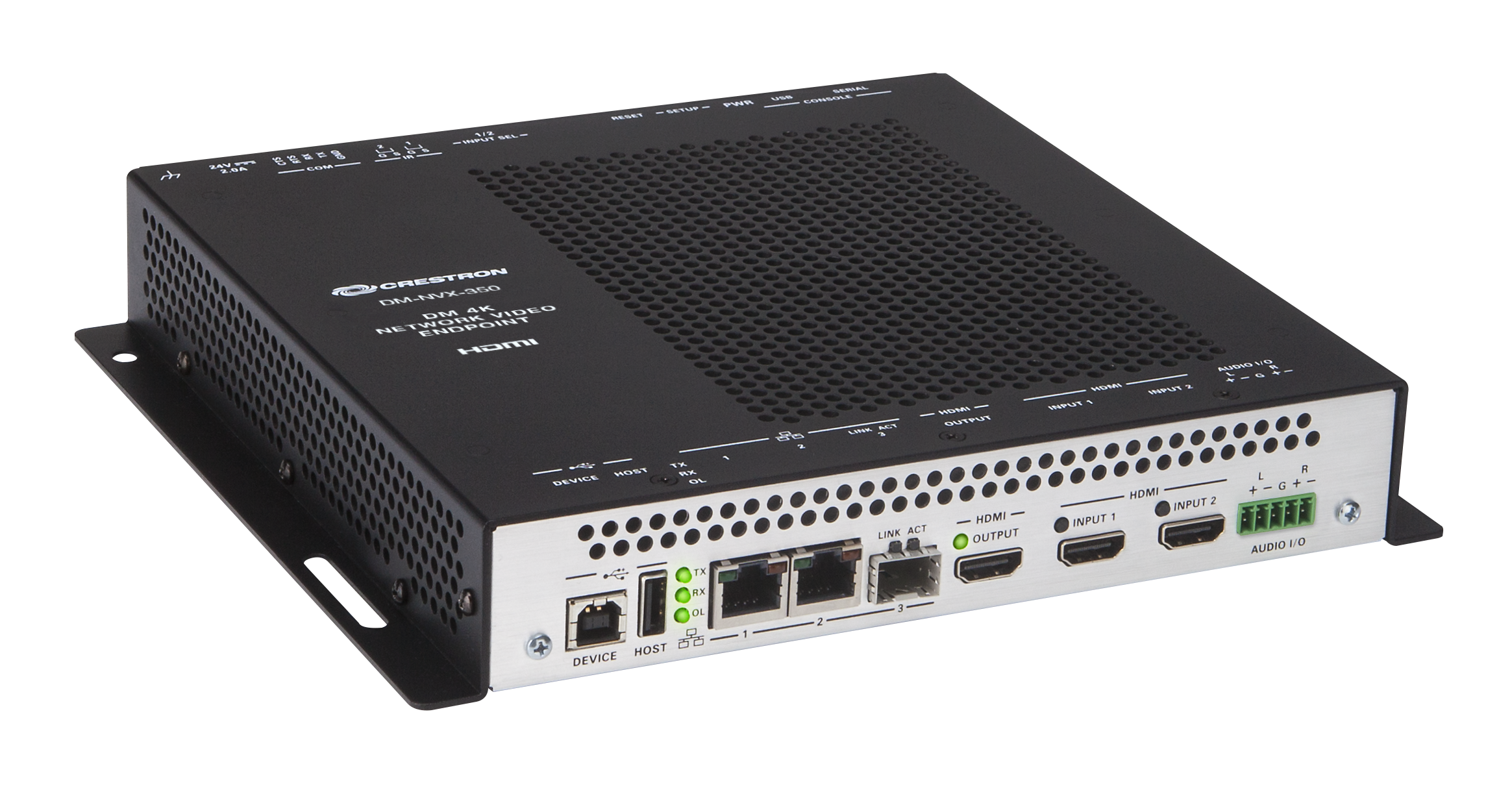
In this comparative analysis, we will explore the characteristics and features that make the AMX SVSI N4321D Audio Transceiver stand out in the competitive market of AV-over-IP solutions.
We will also compare it with notable competitors to provide insights into the strengths and advantages of each product.
AMX SVSI N4321D Audio Transceiver
The AMX SVSI N4321D offers robust Dante, AES67, and PCM networked audio over IP and analog transcoding. Its wide tuning range, support for balanced and unbalanced analog audio, and simplified integration make it an ideal choice for various applications. The transceiver’s audio matrix switching and distribution capabilities, along with compatibility with AMX and third-party controllers, enhance flexibility and ease of use. The inclusion of two auto-sensing gigabit Ethernet ports adds to its versatility.
Crestron DM-NVX Series
Crestron’s DM-NVX series provides high-quality video and audio distribution over Ethernet networks. With support for various video and audio formats, it offers seamless integration and advanced control options. The DM-NVX series is known for its robust performance, extensive feature set, and compatibility with Crestron’s control systems.

Extron NAV Series
Extron’s NAV series enables the distribution of audio, video, and control signals over IP networks. It offers scalability, low-latency performance, and exceptional image quality. The NAV series is renowned for its reliable operation, comprehensive control options, and compatibility with Extron’s ecosystem of products.

Biamp Tesira Series
The Biamp Tesira software provides flexible audio routing and distribution capabilities over IP networks. With advanced DSP processing and intuitive control options, it offers comprehensive audio management for diverse applications. The Tesira series is recognized for its high-quality audio performance, scalability, and seamless integration with Biamp’s ecosystem.

When comparing the AMX SVSI N4321D Audio Transceiver with its competitors, it stands out with its wide tuning range, simplified interoperability, and support for balanced and unbalanced analog audio. Its compatibility with AMX and third-party controllers, along with its versatile connectivity options, make it a compelling choice for AV-over-IP applications. However, it’s essential to consider specific project requirements and evaluate the strengths of each product to determine the best fit for a particular application.









